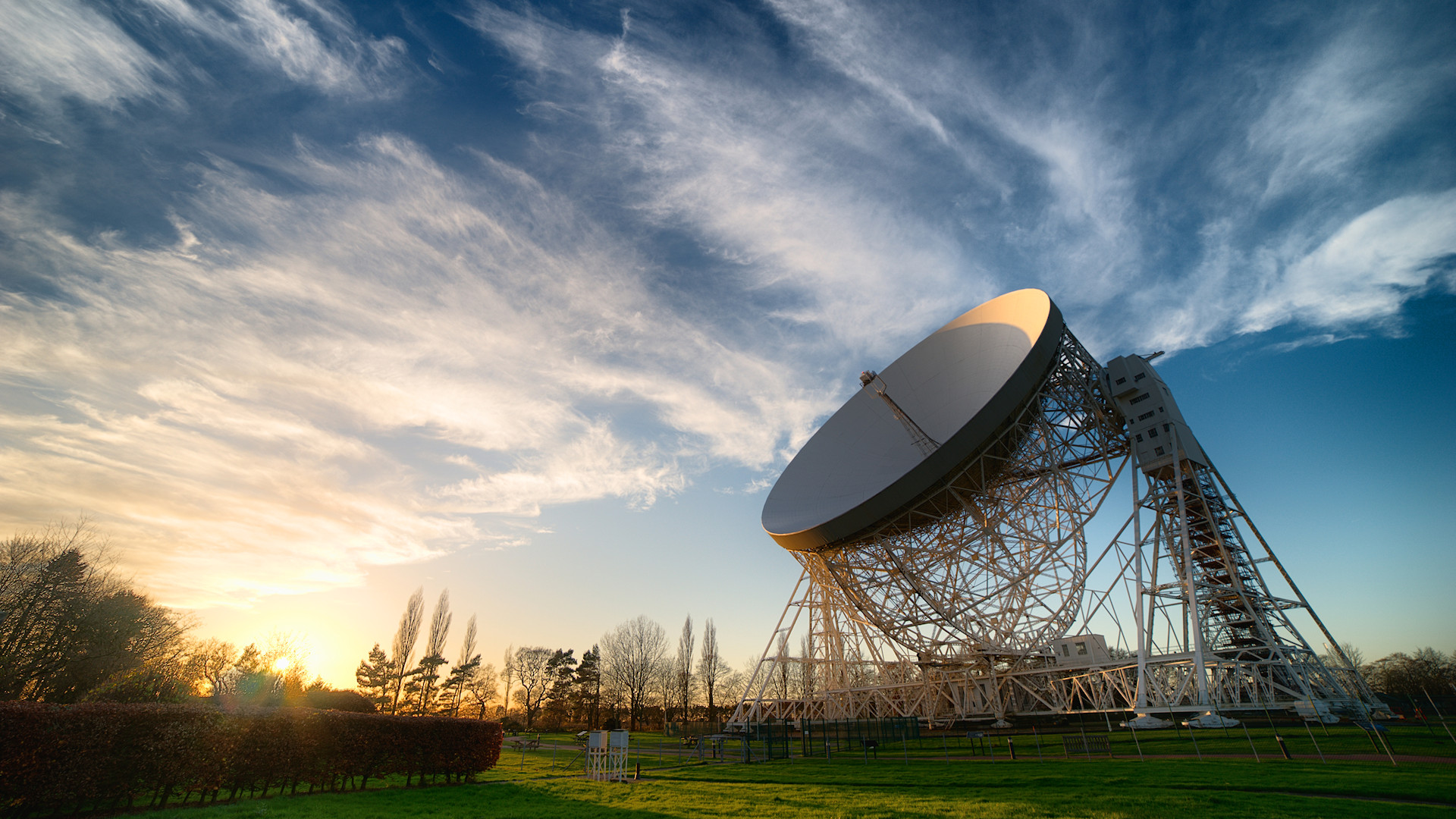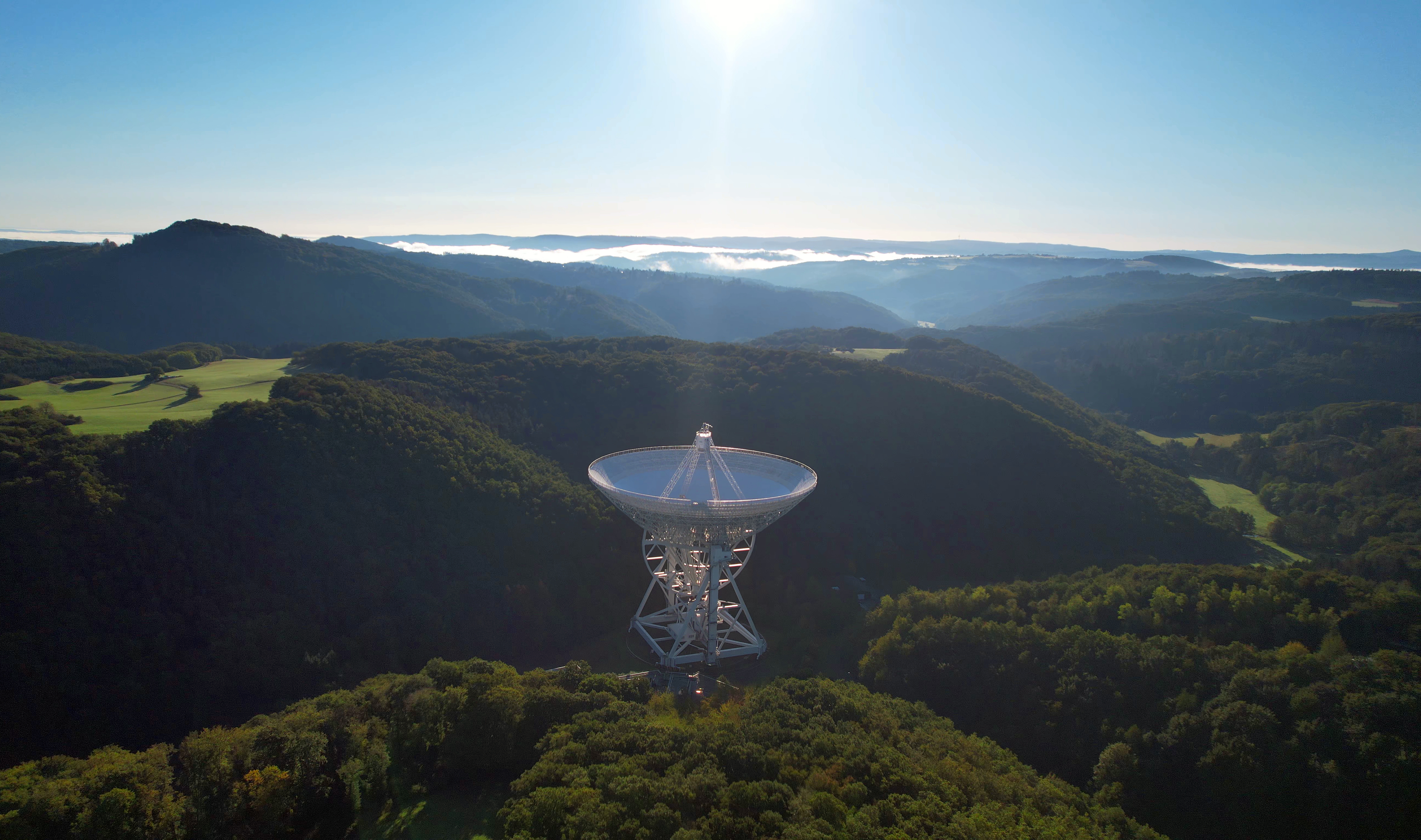All Science News
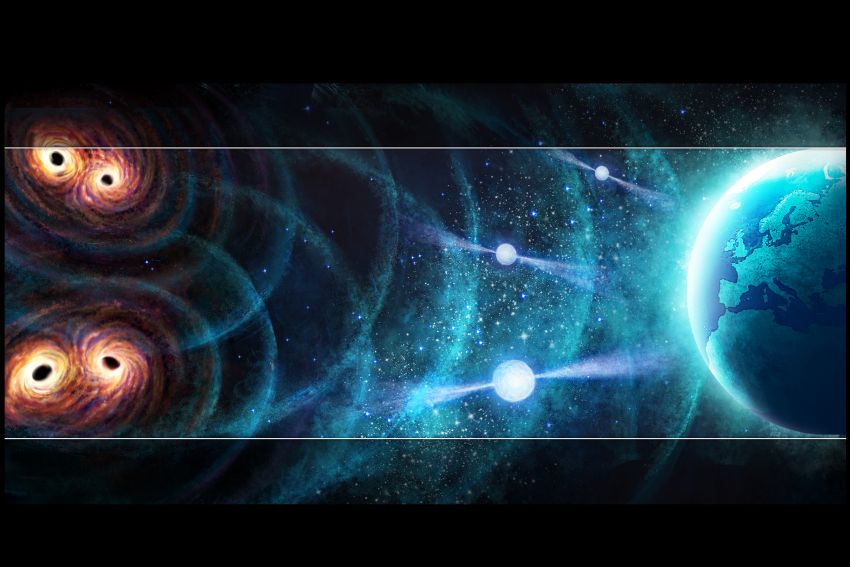
New scientific data show the way to unraveling the creation of the Universe, with the participation of the Institute of Astrophysics of FORTH
A collaboration of European astronomers, together with Indian and Japanese colleagues, have published the results of more than 25 years of observations with six of the World's most sensitive radio telescopes. Within these data, the first evidence for ultra-low-frequency gravitational waves has been seen.
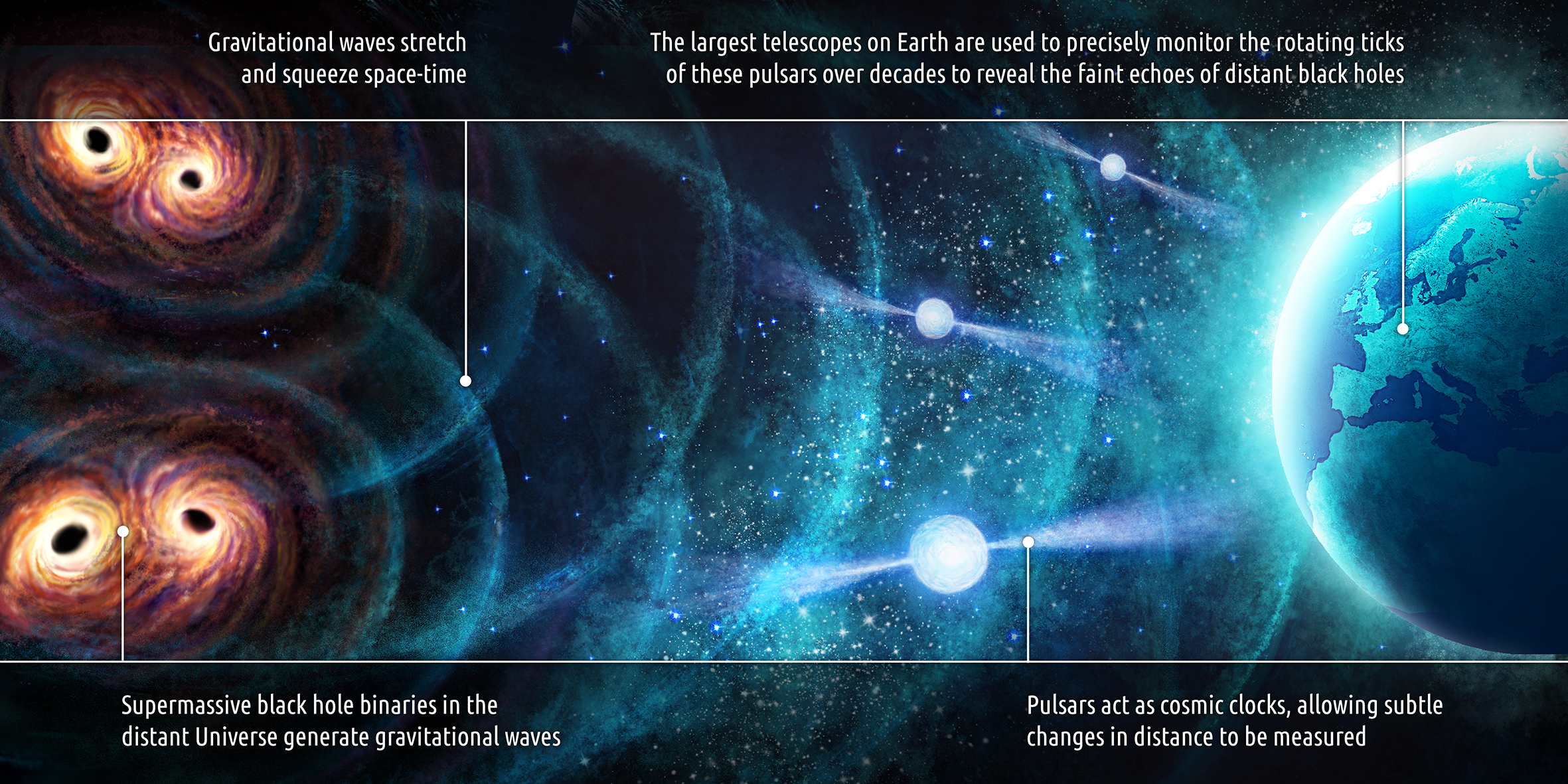
In a series of papers published today in Astronomy & Astrophysics and on ArXiv.org, EPTA scientists show that their data are consistent with a “background hum” of low frequency gravitational waves. These elusive waves are ripples in the fabric of space-time, predicted by Albert Einstein's general theory of relativity, and oscillate with timescales of years to decades, much slower than those detected by ground-based interferometers such as LIGO and VIRGO.
This result is a crucial milestone in opening a new window in the gravitational wave spectrum, which will allow astronomers to study the formation and evolution of supermassive black holes and their host galaxies across cosmic time. It will also provide new tests of gravity and dark matter, potentially also revealing the physical processes that shaped the early Universe.
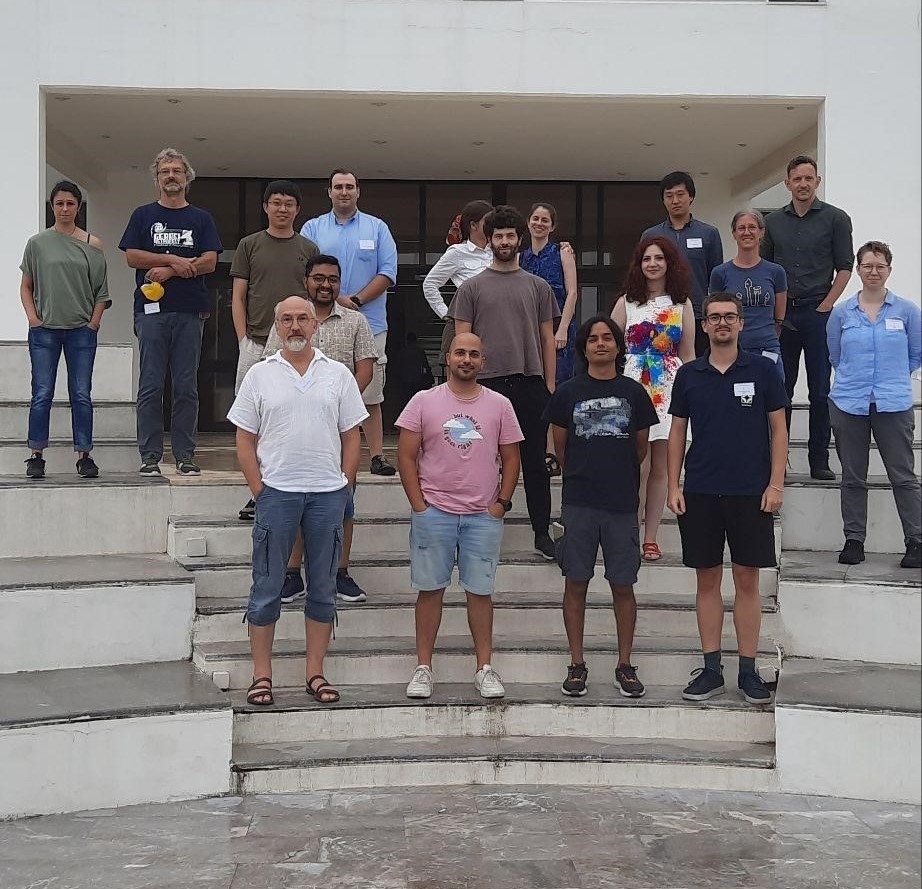
The collaboration believes that the signal was produced by supermassive black hole binaries - pairs of black holes with masses millions to billions times that of the Sun, orbiting each other due to gravitational attraction. These binaries are expected to form when two galaxies merge, bringing their central black holes closer together.
Gravitational waves produced during this process have wavelengths of millions of kilometres, which are too low to be detected by ground-based interferometers like LIGO or Virgo. However, pulsar timing arrays can detect these waves by using pulsars as natural detectors. Pulsars are highly stable and emit regular pulses of radio waves that reach Earth with clock-like precision. When a gravitational wave passes through the Earth-pulsar system, it causes a slight distortion in space-time that affects the arrival time of the pulses.
“By comparing the observed arrival times with the expected ones, we can measure the effect of the gravitational wave and extract information about its source and amplitude,” says John Antoniadis, an Associate Researcher at the FORTH Institute of Astrophysics whose team participated in the data analysis.
Pulsar timing arrays require long-term observations of many pulsars distributed over the sky to achieve sufficient sensitivity and resolution to detect gravitational waves. The dataset analysed by the EPTA contains sensitive data for 25 pulsars collected over the past three decades with Europe’s largest telescopes.
|
|
Effelsberg, Germany |
These are the 100-m Effelsberg Radio in Germany, the Lovell Telescope of the Jodrell Bank Observatory in the United Kingdom, the Nançay Radio Telescope in France, the Sardinia Radio Telescope in Italy and the Westerbork Radio Synthesis Telescope in the Netherlands.
The EPTA is part of a larger international effort, the International Pulsar Timing Array (IPTA), which combines data from similar projects in North America (NANOGrav), Australia (PPTA), India (InPTA) and South Africa (MeerKAT). The same compelling evidence for gravitational waves is seen by NANOGrav and is consistent with results reported by PPTA, and the Chinese Pulsar Timing Array Collaboration.
“This is very exciting,” explains Antoniadis. “The odds that the signal we saw in our data occurred by chance is one-in-ten-thousand. However, the golden standard in Science to claim the detection of a new phenomenon is that the result of the experiment has a probability of occurring by chance less than one in a million. While the EPTA result does not yet meet this golden standard, the fact that our colleagues worldwide see the same signal gives us great confidence that what we see is the real thing”
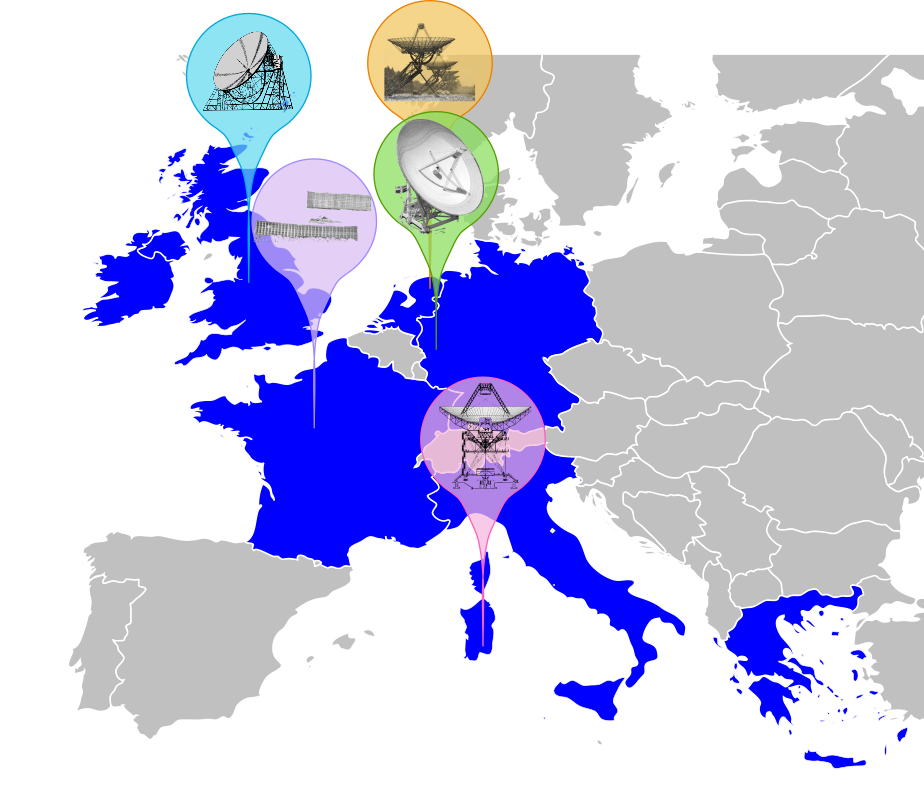
The IPTA scientists are now keen in combining their independent datasets in the context of the IPTA, to better characterise the signal. “Everyone is confident that the combined dataset will provide the ultimate proof that the signal is genuine”, adds Antoniadis.
In addition, the EPTA plan is already preparing for how to move forward. According to Antoniadis, “One aspect of this is planning for new instruments”. “This is why FORTH is leading an international effort supported by European Union funds, to construct a next-generation radio telescope in Crete. The telescope, which we call ARGOS, is specifically designed for dedicated pulsar timing observations. Once built, it will become the most sensitive EPTA instrument. It will allow us to better explore the low-frequency gravitational-wave window, digging deeper for additional signals from the Early Universe”.
EPTA announces evidence for nanohertz gravitational waves: https://www.epta.eu.org/news/epta-dr2-press.html
- The second data release from the European Pulsar Timing Array I. The dataset and timing analysis
- The second data release from the European Pulsar Timing Array II. Customised pulsar noise models for spatially correlated gravitational waves
- The second data release from the European Pulsar Timing Array III. Search for gravitational wave signals
- The second data release from the European Pulsar Timing Array IV. Search for continuous gravitational wave signals
- The second data release from the European Pulsar Timing Array V. Implications for massive black holes, dark matter and the early Universe
- The Second Data Release from the European Pulsar Timing Array VI: Challenging the ultralight dark matter paradigm

